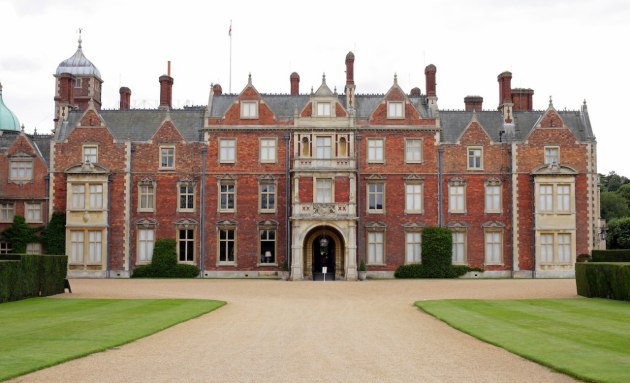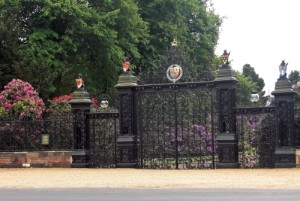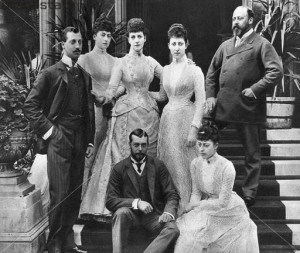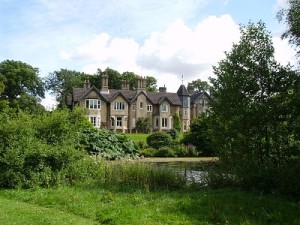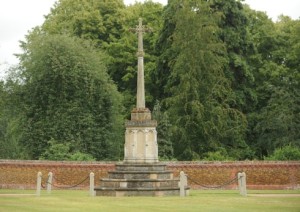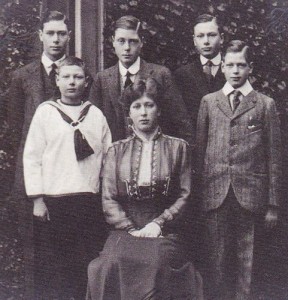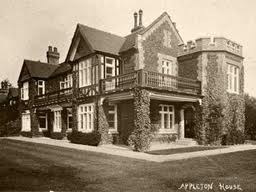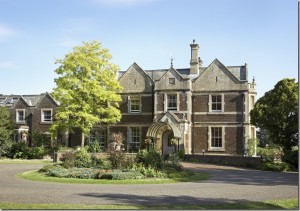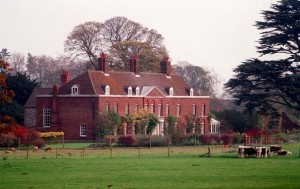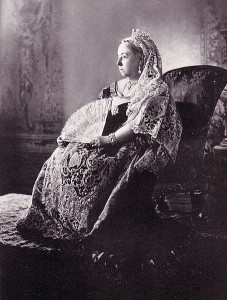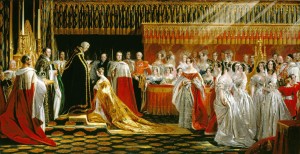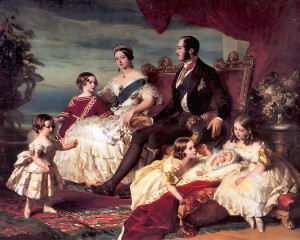Sandringham House is privately owned by Queen Elizabeth II and sits on the 20,000 acre royal Sandringham Estate located in Norfolk, England. The house has been used for over 150 years by four generations of the British Royal Family; most notably it was home to the young Prince Albert (the future King Edward VII). Sandringham House has witnessed many historical events and was the location of the deaths of three Kings; King Edward VII in 1901, King George V in 1935 and King George VI in 1952. Sandringham House was also the site of the first ever Christmas message given by a British monarch via radio broadcast by King George V in 1932.
The history of Sandringham
Long ago, at the time of the reign of Queen Elizabeth I, a smaller house called Sandringham Hall was first built on this site in Norfolk by the architect Cornish Henley. Later, when the house was owned by Charles Spencer Cowper during the 19th century an elaborate porch and conservatory designed by architect Samuel Sanders Teulon were added to the house. Then in 1862 Sandringham was purchased for Queen Victoria’s eldest son, Prince Albert the Prince of Wales. After Prince Albert married Princess Alexandra of Denmark in 1863 and it became their new country home. (For more information on the wedding of this popular royal couple, please click on the following post – Royal Weddings Part Two)
The royal couple quickly made many changes to the Sandringham estate with renovations to the main house, rebuilding cottages and construction of new roads on the property. When the Prince found the house too small for his growing family and the existing house was demolished and replaced by the current Jacobean style red brick house in 1869 which was designed by architect A.J. Humbert. After it was finally completed the new house included beautiful bay windows to bring light into the interior and a new wing with a grand ball room for when the royal couple entertained. The newly renovated house also included some modern amenities; such as gas lighting and bathrooms with running water, flushing toilets and an early version of a shower. The property also saw improvements done to the landscaping and a new garden wall was built incorporating the now famous Norwich Gate which is an impressive ironwork gate designed by Thomas Jekyll and was given to the royal couple as a wedding gift from the people of Norfolk and Norwich.
Sandringham was the place for intimate royal family gatherings and visits by important guests such as Prince Albert’s nephew, Kaiser Wilhelm of Germany and Prussia. While in residence at Sandringham, the Prince thoroughly enjoyed the grounds of the estate, riding and hunting were two of his favorite outdoor activities. Because of his love and passion for shooting, he devised a plan to make the most of the daylight hours during the winter months and for this reason clocks at Sandringham were set forward by a half an hour to allow more time for his favorite sport. Some say that another reason for setting the clock back was because, much to King Edward’s annoyance, Queen Alexandra was constantly late. Regardless of the reason, this custom became known as “Sandringham Time” on the estate and remained in effect even after King Edward VII death in 1910. (Special note: King Edward VII’s son, King George V, honored the tradition set by his father and throughout his reign “Sandringham Time” stayed in effect until his own death in 1936. At that time his son, King Edward VIII, set the clocks back to the correct time in defiance of his overbearing father)
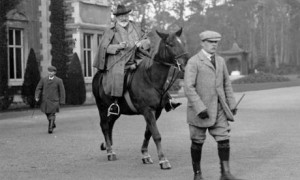
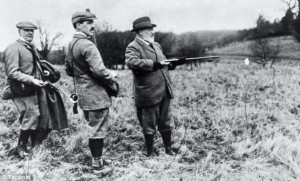
Throughout the years the relationship between Queen Victoria and her son, Prince Albert, was very strained due to the fact that she blamed him for the untimely death of her husband which she believed Prince Albert caused inadvertently. The Queen also disapproved of her son’s pursuit of self-indulgent pleasures of drinking, gambling and his frequent associations with married women. For these reasons she stayed away from Sandringham and never visited during her extended period of mourning for her beloved husband and her self-imposed seclusion from public life and strong aversion of her royal duties in London. But when Prince Albert was diagnosed with typhoid fever, the same illness that took her husband, the Queen quickly went to Sandringham fearing the worst. Fortunately the Prince survived and a grateful Queen and in fact the entire nation celebrated that the life of the popular Prince of Wales was spared.
In 1892, more difficult times came to Sandringham when the eldest son of the Prince and Princess of Wales, known as Prince Albert the Duke of Clarence, suddenly became ill with influenza and sadly he died within a short period of time. Queen Victoria was very fond of his fiancée, Princess Mark of Teck, and after a brief period of mourning she encouraged her to marry the brother, Prince George, who was now second in line to the throne. So, it seems despite the tragic death of Prince Albert there was a happy ending when the Duke and Duchess of York were married in 1893. The royal couple later moved into a smaller house on the Sandringham Estate where they lived together with their growing family for the next 30 years. (For more information on the grand wedding of this royal couple, please click on the following post – Royal Weddings Part Two)
With the death of Queen Victoria in 1901, the new King Edward VII was required to be in London and he spent less time at his beloved Sandringham. He tried to visit Norfolk whenever he could and continued to make improvements on the estate. Unfortunately his reign was very brief and lasted less than ten years. Some say that his over indulgent lifestyle of eating, drinking and smoking ultimately lead to his poor health. Over his last years, he suffered from severe bronchitis and towards the end a series of heart attacks. He died on May 6, 1910 and is buried in St. George’s Chapel at Windsor Castle. After his father’s death, the new King George V and Queen Mary were very gracious when they allowed his mother, Queen Alexandra, to remain living in Sandringham House until her death in 1925. The royal couple continued to live in their smaller house on the estate which eventually became known as the York Cottage.
During World War I, the Sanringham estate workers and men of the small villages of Norfolk formed the 5th Norfolk Regiment which was led by Captain Frank Beck, the King’s estate land agent. The Sandringham Company was eventually sent to fight the war in Europe and sadly the entire battalion was killed in the Battle of Gallipoli in August 1915. Some historians state that the men were killed in the battle or perished in a deadly fire cause by an exploded shell and other historians believe that some men died in the battle while the other men were executed afterwards by the Turks who took no prisoners. To honor these fallen heroes of “The Lost Battalion” a memorial was erected near the Church of St. Magdalene located on the Sandringham Estate and was dedicated in 1920 by King George V with Queen Mary and Queen Alexandra in attendance. (Special Note: “All the King’s Men”, which tells the story of the Sandringham Company, is a novel written by Robert Penn Warren that was first published in 1946. The book later adapted for film in 1947 and then again in 2006)
Sandringham was the setting of a very sad story that involved one member of the royal family. Prince John (born: July 12, 1905) was the fifth son and youngest child of King George V and Queen Mary. He was diagnosed with epilepsy at the age of four years old and he also suffered from an intellectual disability which was later identified as a form of autism. As his condition continued to deteriorate he was sent to live with his governess in a small cottage on the Sandringham Estate. He eventually became almost completely isolated from members of his family with only infrequent visits by his mother and older brother. Sadly he died at the age of thirteen on January 18, 1919 after a severe seizure and is buried in the cemetery at St. Mary Magdalene located on the estate. Information about his condition was only released to the public after his death and there has been much controversy about his seemingly unsympathetic treatment and disappearance from the royal family but in reality he received excellent care from his loving governess and enjoyed a pleasant but quiet life living on the Sandringham Estate. (Special note: The touching story of the short life of Prince John was made into a BBC movie in 2003. “The Lost Prince” was written and directed by Stephen Poliakoff and is currently available on DVD)
After King George V died at Sandringham on January 20, 1936, the estate passed to his eldest son who became King Edward VIII. Less than a year after his accession and his unexpected abdication, a problem developed when the former King Edward VII still held the rights to the Sandringham and Balmoral estates. Both estates had been purchased as private properties during the reign of Queen Victoria and were not included as part of the British Royal Crown. Fortunately the matter was resolved when a financial settlement was quickly reached and the ownership of the both properties was transferred to his brother, the new King George VI. (Special note: Today, both Sandringham and Balmoral remain the private estates of Queen Elizabeth II who inherited them from her father when he died)
King George VI was born in 1895 in York Cottage located on the Sandringham estate. He had many fond childhood memories spent there with his grandfather and father. Throughout the years he continued to traditionally spent the Christmas holidays there with his wife, Queen Elizabeth, and their two daughters Princess Elizabeth and Princess Margaret. Sadly, King George VI died in his sleep at Sandringham House on the night of February 6, 1952. It has been said that the stress of his brother’s abdication, his accession and duties as King during World War II along with his daily smoking habit caused his health to deteriorate over time and he died at a relatively young age of 56 years old. His coffin was laid in St. Mary Magdalene church for two days before it was taken by train to London then a funeral service and burial in St. George’s Chapel at Windsor Castle.
Queen Elizabeth II, the current monarch of England, also loves Sandringham and enjoys the seclusion of the English countryside. She first visited there for Christmas 1926 when she was just eight months old. She returned often and made regular visits with her parents to see her grandparents, King George V and Queen Mary. During World War II King George VI sent Princess Elizabeth and her sister, Princess Margaret, to Windsor Caslte and they also spent extended periods of time at Sandringham staying at Appleton House to avoid the frequent and very dangerous German bombings of London.
Queen Elizabeth has customarily spent the anniversary of her father’s death and her subsequent accession quietly and privately with her immediate family at Sandringham House. She will arrive just before Christmas and remain there for the entire month of February. She enjoys spending time there with her children, grandchildren and now great-grandchildren. (For more information on how the Royal Family spends Christmas at Sandringham and their holiday traditions, please click on the link)
There are several additional houses and cottages located on the Sandringham Estate and some of these have been mentioned already in this post. Listed below are a few more buildings:
St. Mary Magdalene Church –
St, Mary Magdalene Church is a relatively small parish church located on the Sandringham Estate just a short distance from the Sandringham House. The building dates back to the 19th century and a beautiful chancel, the space around the altar in the sanctuary, features carved angels on either side of the silver altar were a gift from Queen Alexandra to pay tribute to her husband, King Edward II. Other notable features in the church include a silver pulpit, a 17th century Spanish silver cross and a Florentine marble font.
The church is of great historical interest since it has been used since the time of Queen Victoria and there are many memorials dedicated to members of the Royal Family. As previously mentioned, Prince John, the son of King George VI, is buried in the adjacent cemetery and after his death in 1952 King George VI laid in state in the church for two days prior to his funeral and burial at Windsor. The church is still used frequently by the Royal Family whenever they are in residence at the Sandringham Estate which is usually during the Christmas season every year.
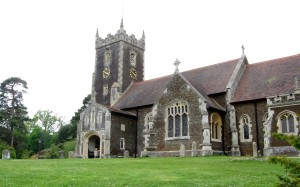
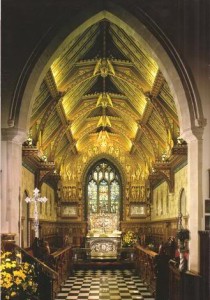
Park House –
Park House is located just west of Sandringham House. When Prince Albert (later King Edward VII) acquired the property in 1862 he had several additional houses, including Park House, built to accommodate his numerous guests. Then, in the 1930s, King George V leased Park House his friend Edmund Roche, the 4th Baron of Fermoy. Edmund’s daughter Frances was born there in 1936. Frances later married John Spencer, Viscount Althorp, in 1954. Their daughter Diana, the future Princess of Wales, was born there in 1961. Park House was Diana’s childhood home and Viscount Spencer continued leasing the house until 1975 when he became the Earl Spencer and the family moved to Althorp. (Special note: In 1983, Queen Elizabeth offered Park House to the Leonard Cheshire Disability organization to use as a hotel for disabled people and is now is specially designed and equipped to accommodate their needs)
Anmer Hall –
Anmer Hall is a Georgian-style country house built in the 18th century and is located just east of Sandringham. Several years after Sandringham was bought by Queen Victoria for her son, Prince Albert (later King Edward VII), Anmer Hall and the surrounding land was added to the estate in 1898. The south side of the red brick house features thirteen bays topped with stone pediments and a porch with two Tuscan-style columns while the north side of the house features a covered porch entrance. Throughout the years the house has been a private residence for various occupants associated with the Royal Family, such as the Duke and Duchess of Kent who used it as their country house from 1972 to 1990. Recently, after the wedding of Queen Elizabeth’s grandson Prince William to Kate, the house was given to the young Royal couple. The new Duke and Duchess of Cambridge have hired Charles Morris, the architect who previously worked on Prince Charles’ Highgrove House, to design extensive renovations to Anmer Hall which should be completed in time for Christmas 2014.
Tourist information for visiting Sandringham
As previously mentioned, the 20,000 acre Sandringham Estate is privately owned by Queen Elizabeth II and is located in Norfolk, England. The house has been used for over 150 years by four generations of the British Royal Family. The gardens of Sandringham were first opened to the public by King Edward VII in 1908, later the Sandringham Museum was opened by King George V in 1930 and Sandringham House was opened to the public by Queen Elizabeth II in 1977.
Guests should start their visit to the Sandringham Estate at the Visitor Center. The recommended time of a typical visit is 3 to 4 hours for guests to tour Sandringham House, visit the museum, walk through the beautiful gardens, shop in the gift shop and even have something to eat at the restaurant. For specific information regardes dates and hours of operation, prices and additional tour information please check their website at www.sandringhamestate.co.uk

